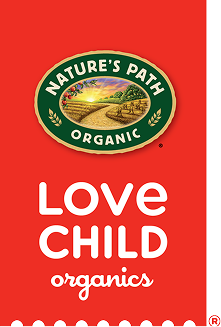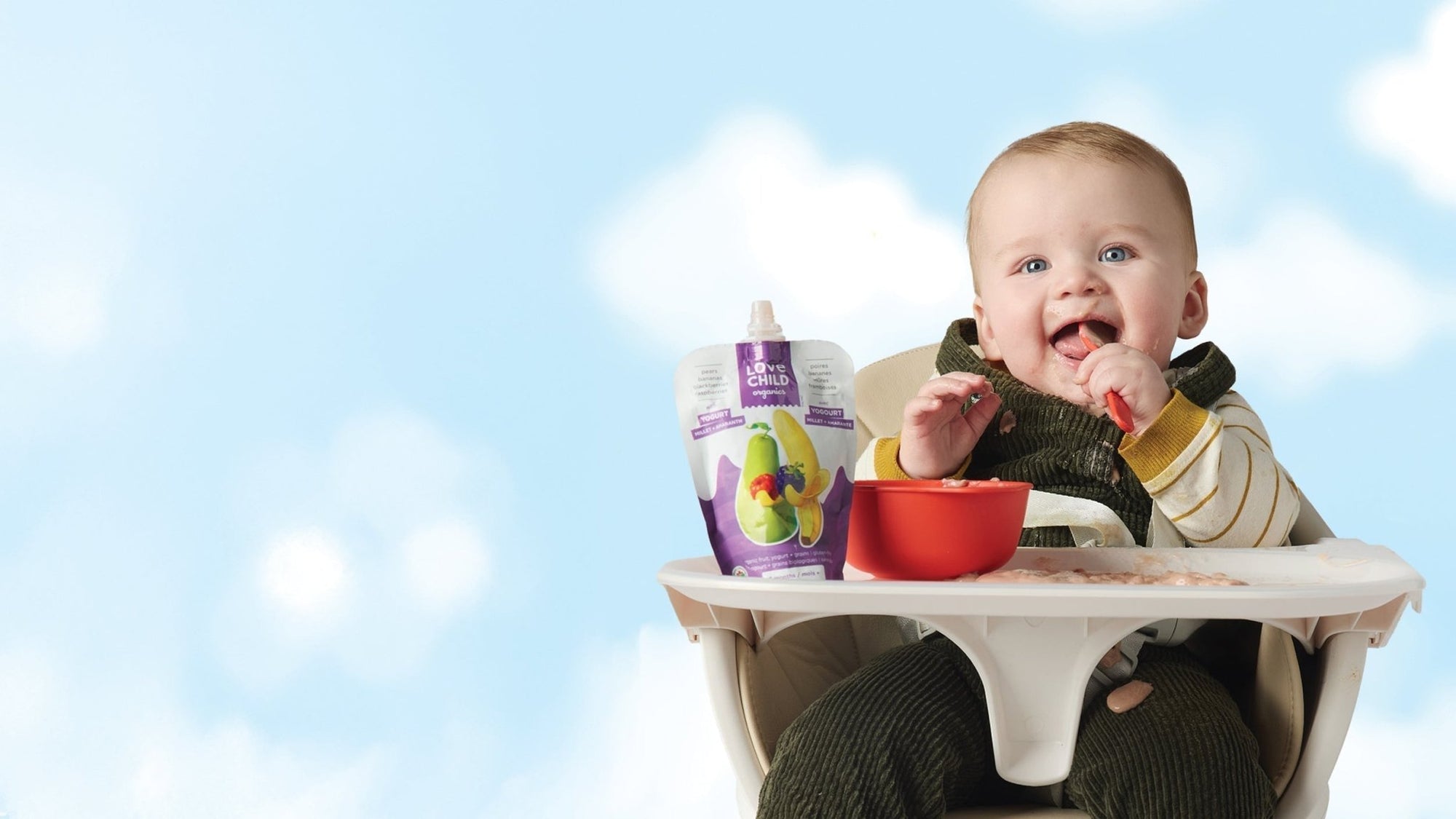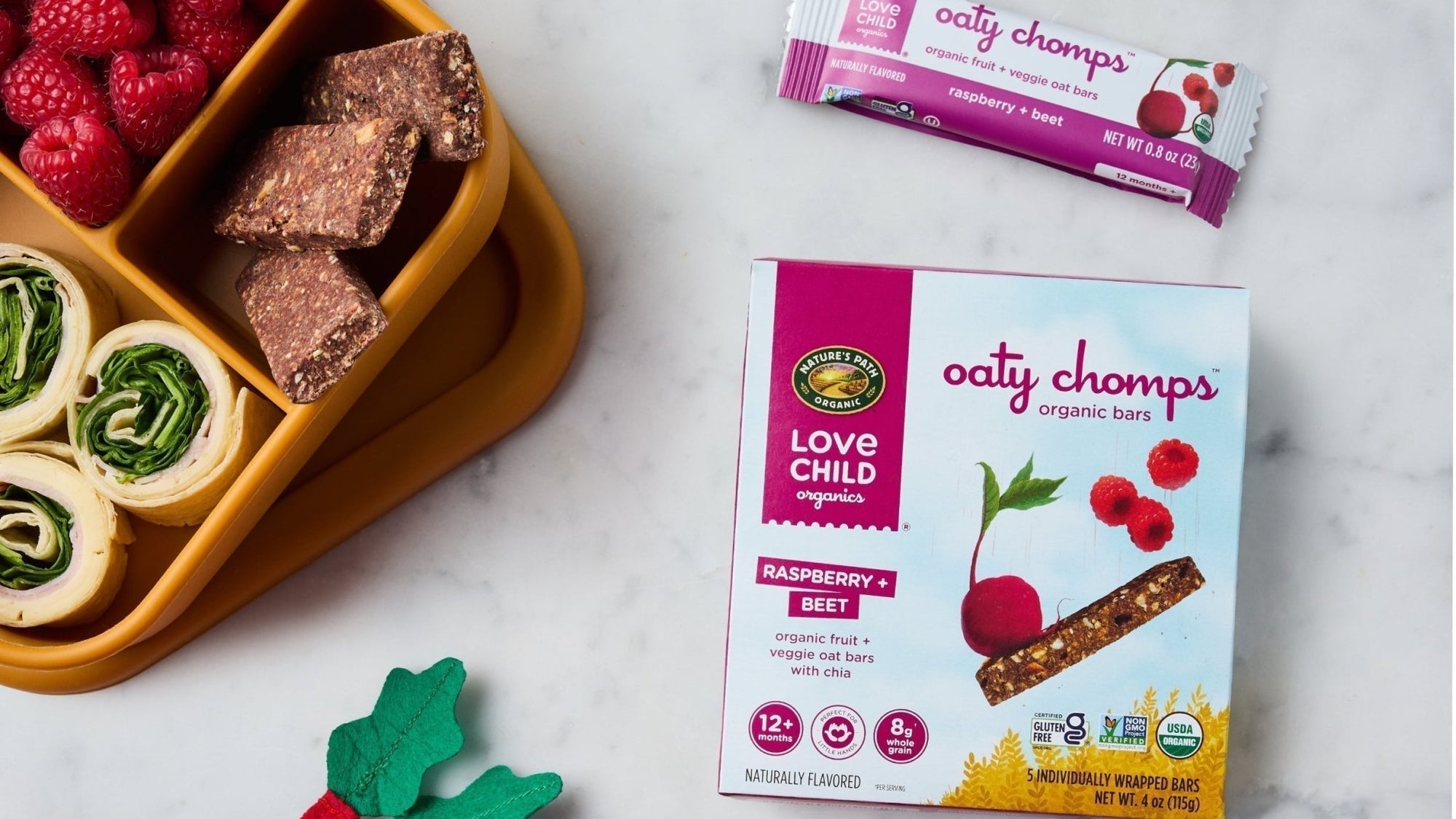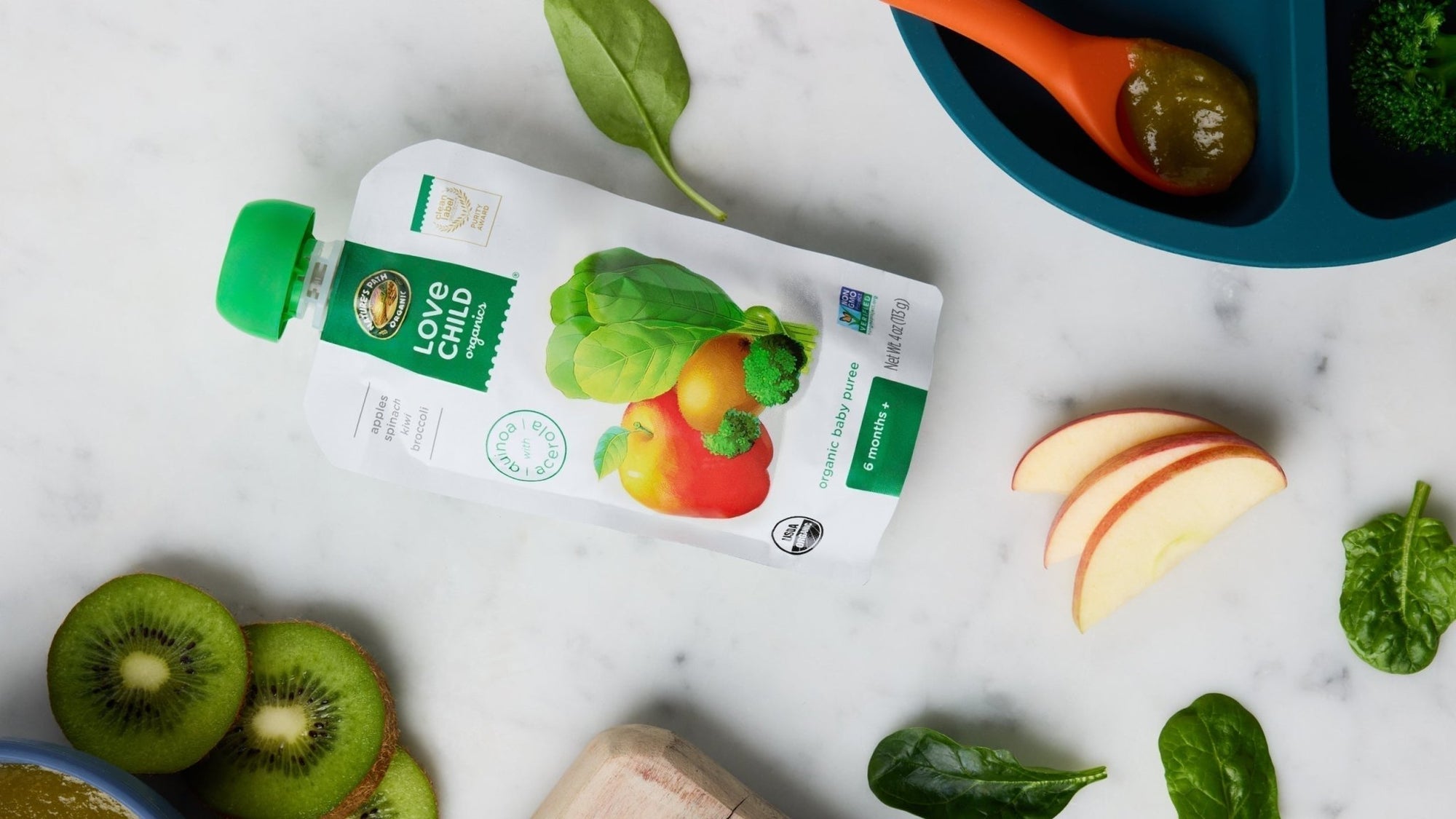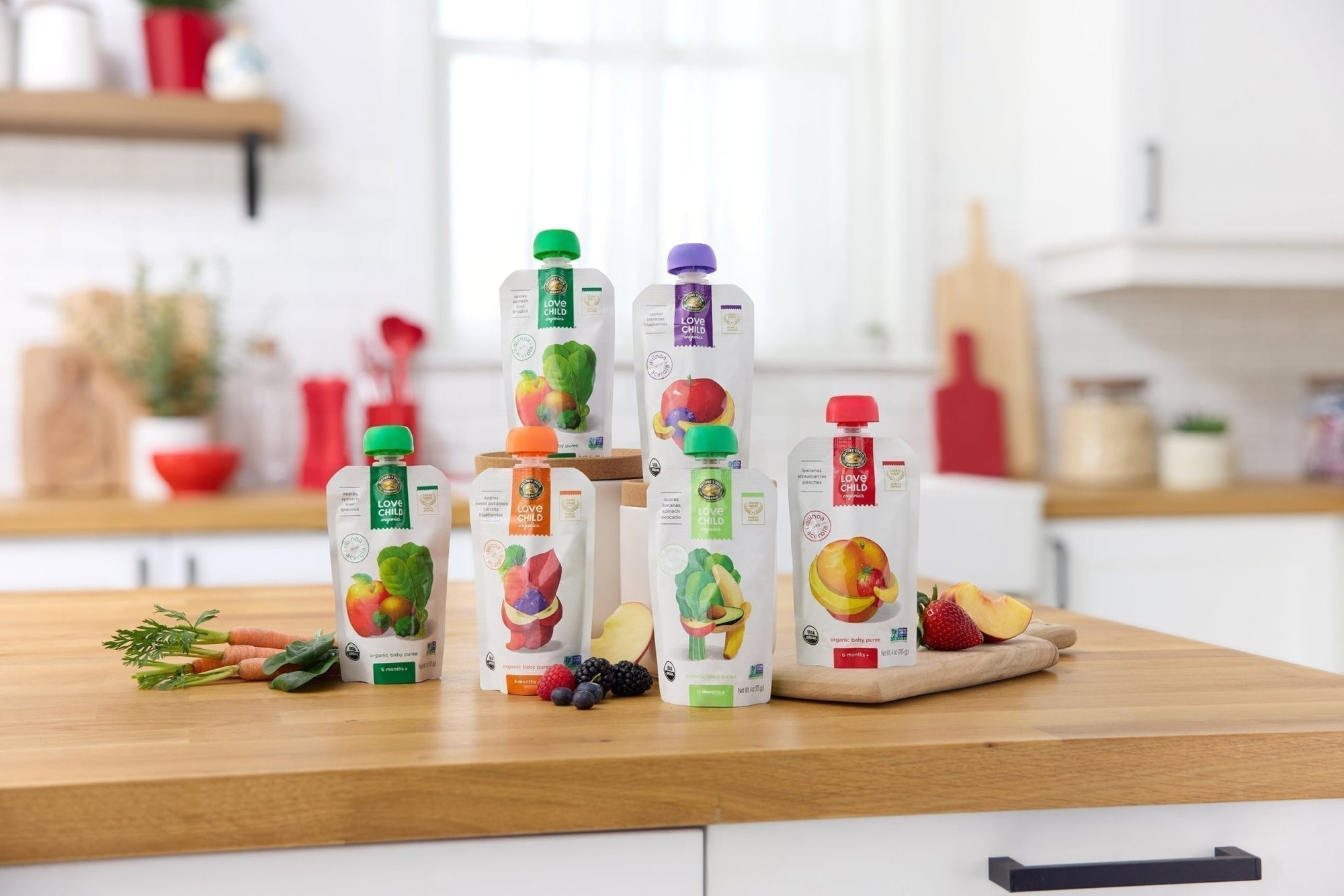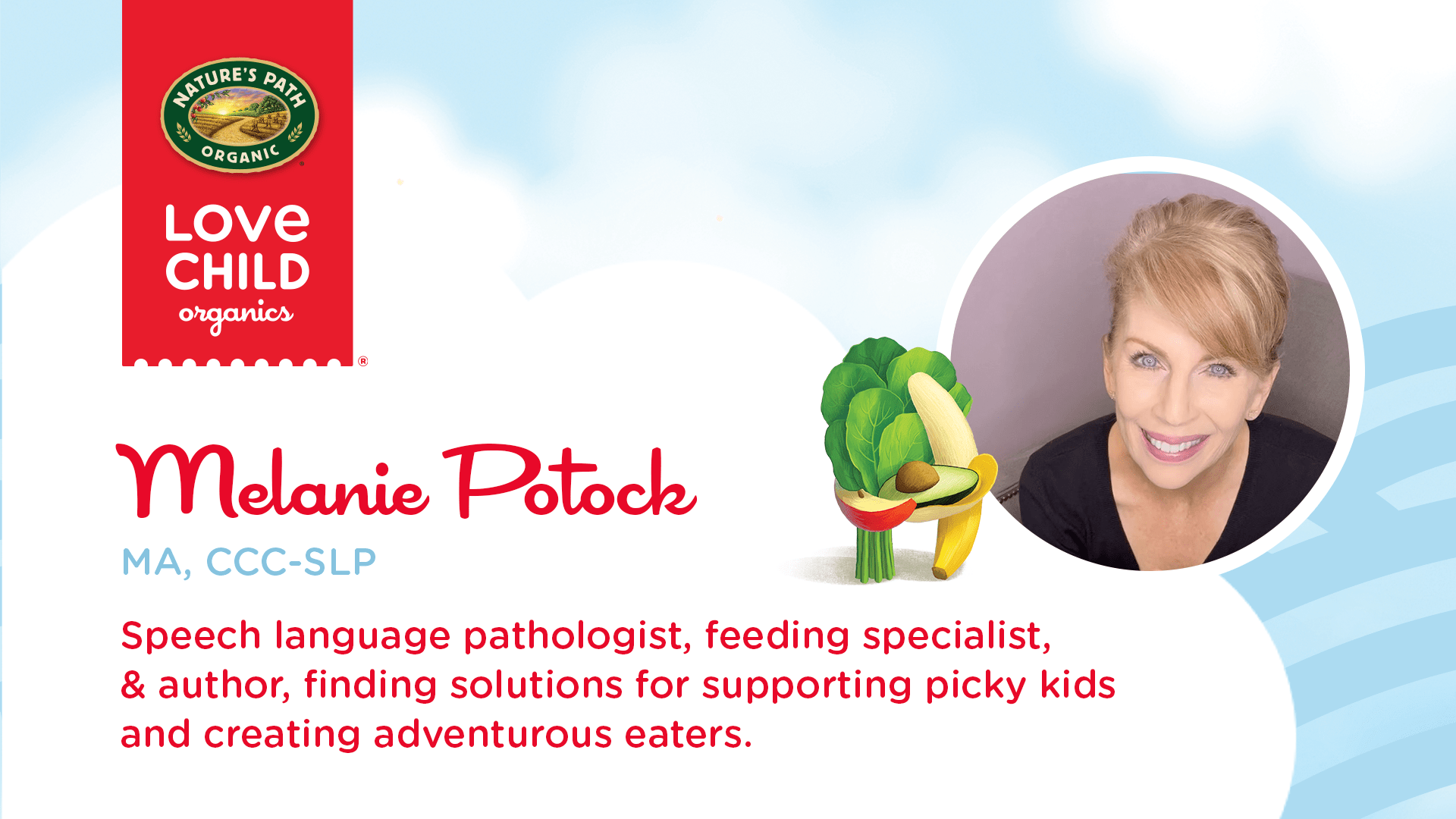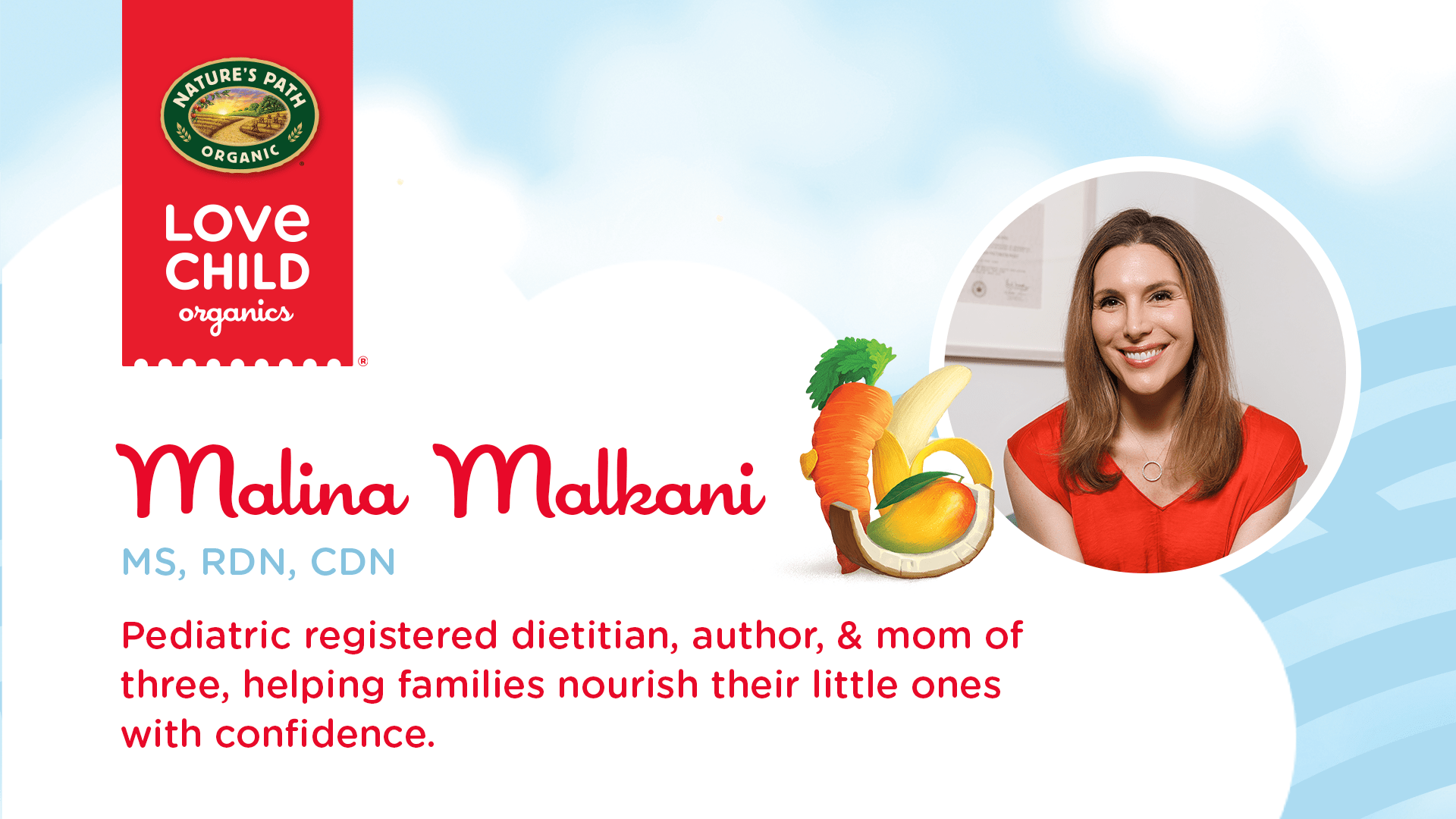
The Best Baby Puree: What to Look for in the Grocery Aisle
Ever find yourself turning down the baby food aisle only to feel totally overwhelmed by all the choices? With so many options on the shelves, it’s hard to know what’s best for your little one—especially when it comes to purees.
The good news? You don’t have to overthink it. If you focus on offering variety, you’re already making great choices for your baby. There are four key types of variety to keep in mind: flavor, nutrition, texture, and serving options.
As moms, feeding specialists, and your partners here at Love Child Organics, we’re here to walk you through what to look for—and how variety in purees can help your baby learn to love food from the start.
Flavor Variety: The Science Behind Why It Matters
Taste and flavor aren’t quite the same. While taste includes basic sensations like sweet, salty, sour, bitter, and umami, flavor is a richer experience that includes smell and the way ingredients blend together. The more flavor variety your baby experiences early on, the more likely they are to enjoy trying new foods later.
Babies naturally prefer sweet flavors—thanks to amniotic fluid and breast milk—but that doesn’t mean they can’t learn to love savory and veggie-forward flavors too. In fact, early and consistent exposure to a wide range of flavors has been shown to support more adventurous eating habits down the road.
You might’ve heard of “flavor training”—a gentle introduction to veggie tastes between 4 and 6 months of age, before full-on solids begin. It’s as simple as offering a tiny taste of a veggie puree on baby’s lips. No pressure, no strict schedule—just a relaxed way to start building familiarity and acceptance of new flavors.
We love our Love Child Organics Superblends for this! Options like Pears, Kale + Peas or Apples, Spinach, Kiwi + Broccoli provide a delicious balance of vegetable-forward flavors that help develop your baby’s palate right from the start.
And if you’d rather begin with single-food purees, that’s totally fine too! Just keep in mind that offering single food introductions of foods that are not common allergens is not necessary. Dietary variety is a great goal from the start for many reasons, including that increased diet diversity during infancy may lower a child’s odds of developing food allergies. So many wins!
Nutrient Variety: Nourishing Your Baby’s Growth
While breast milk and/or infant formula will continue to be your baby’s primary nutrition source for the first year, around 6 months of age, babies need more—especially when it comes to nutrients like iron and zinc.
Iron is essential for brain development, immune support, and growth, yet about 1 in 5 babies between 6–12 months are at risk for iron deficiency. Zinc is also essential for growth and immunity, and exclusively breastfed babies, in particular, need to get more of it from food as they grow.
That’s why it’s so important to choose purees made from real, whole food ingredients that are naturally rich in these nutrients—like lentils, beans, spinach, whole grains, nuts, and seeds. These ingredients also provide fiber for gut health, plant-based protein for growth, and choline for brain development.
Purees with healthy fats—like coconut, avocado, or full-fat yogurt—are another smart pick. Healthy fats fuel your baby’s rapidly growing brain and body. Look for combos like Apples, Bananas, Spinach + Avocado or Bananas, Pumpkin, Pears + Coconut from Love Child Organics for nourishing blends packed with benefits.
And don’t forget about vitamins A and C! Orange veggies like carrots and sweet potatoes bring vitamin A for healthy vision and immune support, while spinach, berries, and citrus fruits provide vitamin C, which helps your baby’s body absorb iron from plant-based foods.
Texture Variety: Supporting Feeding Skills Through Sensory Play
Imagine if everything you ever ate had the exact same smooth, silky texture. Eventually, trying something new might feel… weird. That’s why offering your baby a variety of safe textures is so important—it helps them build confidence and develop critical feeding skills.
Different textures encourage babies to move food around their mouths, strengthen tongue control, and begin practicing early chewing motions. These are all key steps on the path to eating more complex foods.
Your baby’s tactile (touch) system plays a big role here. Every time they touch or taste something new, their brain makes a connection. The more textures they explore, the better they’ll get at identifying, accepting, and enjoying different foods.
Look for purees with varying textures (we’ll share some examples in a future post!), or get creative at home—use purees as dips for soft-cooked veggies, spread them on toast strips, or offer thicker spoonfuls to encourage more oral motor development.
Serving Variety: Boosting Skills One Bite at a Time
Feeding specialists have a terrific strategy that helps babies experience new flavors while exploring safe, new texture combinations, too! Love Child Organics has several Superblends flavors to choose from, but let’s examine the unique flavor profiles of these two purees, and then combine them with another texture to boost oral motor skills one bite at a time!
Start with the super-smooth and silky Superblend of Bananas, Strawberries + Peaches. The slight tang of the peaches provides a bit more sensory input for baby, and that’s balanced by the sweetness of the bananas and strawberries. Lightly toast a piece of seedless bread (seeds can be a choking hazard for babies), cut off the crust, and then cut into strips about the size of your index finger. Squeeze puree from one end of the toast to the other and serve. Toast is safest for babies to gnaw and chew as compared to bread which can gum up and create a choking hazard. The added puree not only changes the flavor profile of the blander toast but also begins to moisten the toast as baby sucks and gnaws at the strip in their little fist. Your baby is also practicing bringing their fist to the mouth, one of the first fine-motor skills that supports their journey to eating solids!
There’s something delightfully sweet and earthy about the Pears, Kale + Peas Superblends, and now is the perfect time to introduce greens to baby. Like many of the Superblends, this one also includes quinoa with acerola, and the added texture, as compared to our first super-smooth puree above, is subtle and welcoming. These gradual changes in texture are essential for baby’s sensory system to learn about all kinds of food, and you can provide an added boost with toast again—but with a little twist! This time, toast the bread a little darker, and using a butter knife, simply scrape off the crumbs into baby’s bowl. Add a squirt of puree and give it a gentle stir—now you’ve added a bit more texture. You can increase the texture with more crumbs the next time too. Watch how baby moves their tongue to explore the new sensation! Encourage baby to get some on their hands and fingers too—that helps them to predict how this new mix of textures will feel in their mouth.
No toast available? Reach for a small, textured spoon to serve any blend of puree. Even a bumpy, silicone teether will do! You’ll notice that baby will respond with increased and sometimes exaggerated tongue movements as they learn that their tongue moves in a variety of ways, including from forward-back and side-to-side.
The Takeaway: Variety Helps Raise Adventurous Eaters
Incorporating a variety of flavors, nutrients, textures, and serving styles isn’t only good for your baby’s health today—it also helps build the foundation for a lifelong positive relationship with food. The more experiences your baby has with different tastes and textures now, the more confident and curious they’ll be when it comes to eating as they grow.
Offering variety early on helps you raise an adventurous eater—one who’s open to trying new foods, comfortable with different textures, and more likely to enjoy mealtimes for years to come. And that’s a big win for both of you! Love Child Organics is here to support you every step of the way. Thanks for reading!
AUTHOR BIO
Melanie Potock, MA, CCC-SLP (https://mymunchbug.com/)
&
Malina Malkani, MS, RDN, CDN (https://www.malinamalkani.com/)
